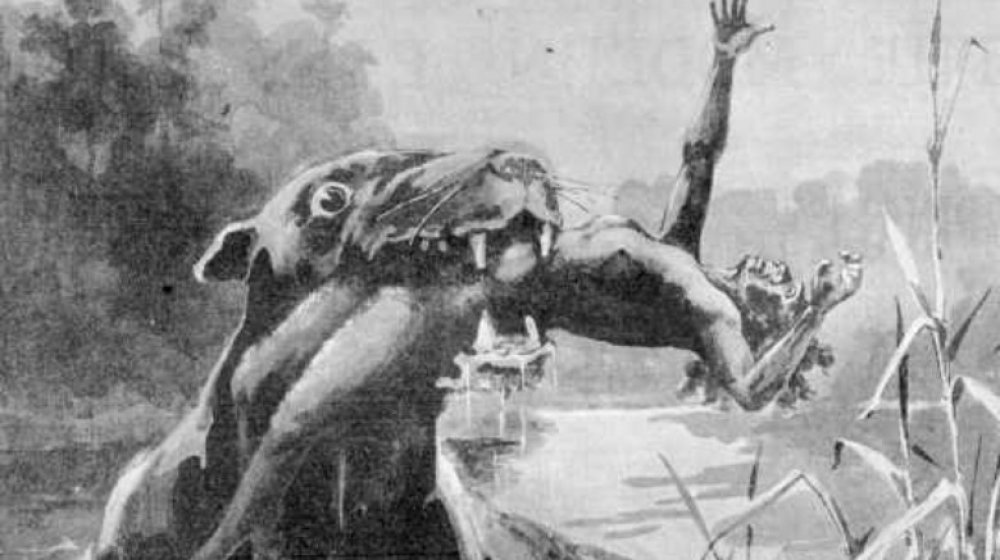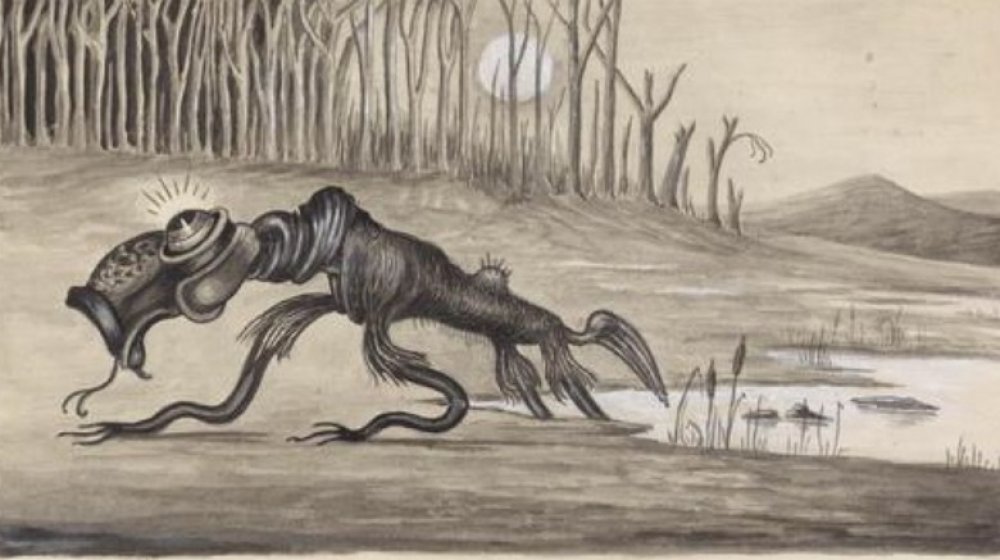The Legend Of The Bunyip Explained
As if humans with unpleasant tendencies weren't enough (Jack the Ripper, anyone?), we have to let our collective fertile imaginations roam about, creating havoc and fresh reasons to be terrified of the dark. Or any other time of the day, for that matter. Whether it's the Gobble'uns of James Whitcomb Riley, or werewolves, or the Loch Ness Monster, or the bogeyman, or — well, the list goes on, certainly, and will probably continue to expand as long as human beings have an imagination. All 'round the world, there are beasties — as the Scots used to pray (and might still), according to the University of Pittsburgh, "From ghoulies and ghosties / And long-leggedy beasties / And things that go bump in the night, / Good Lord, deliver us!" And when we say all 'round, we mean just that: including Australia.
In his book In a Sunburned Country Bill Bryson told us that Australia is home to 14 species of venomous snakes, including one that is "the most poisonous snake on earth." You'd think that would be enough. Even the platypus has spurs that will inject a toxin potent enough to kill small animals and put a human being into intense pain, says Encyclopedia Britannica. You'd think there's enough in the natural world. But no.
There's no firm agreement about how a bunyip looks
The bunyip is a creature which defies description, mostly because the stories about it vary widely in terms of its identifying characteristics. As Australian Geographic puts it, "Ask 10 people and you'll get 10 different descriptions." Usually described as about the size of a whale (ah, but which whale?) and amphibious, the bunyip finds its roots in Aboriginal folk tales. The creature lurks in the water, awaiting the unsuspecting — as Thought Catalog tells us, it might be bloodthirsty, but other tales paint it as an avenging creature sent to punish the unrighteous. They're supposed to inhabit the swamps of New South Wales, says Australian Geographic. Oh, and it roars. Loudly. So claimed some railroad workers in the 1930s who heard — something. There were even reports into the 1960s, though none since part of the swamps were dammed in 1974.
There are even bones that may or may not belong to the bunyip, discovered in the 19th Century and reinforcing the "well, maybe" approach to bunyip legends. Does the bunyip exist? Certainly in the mythology of the Aboriginal peoples, and certainly in literature. Is that enough? Make a note to ask, the next time you're in Australia.

